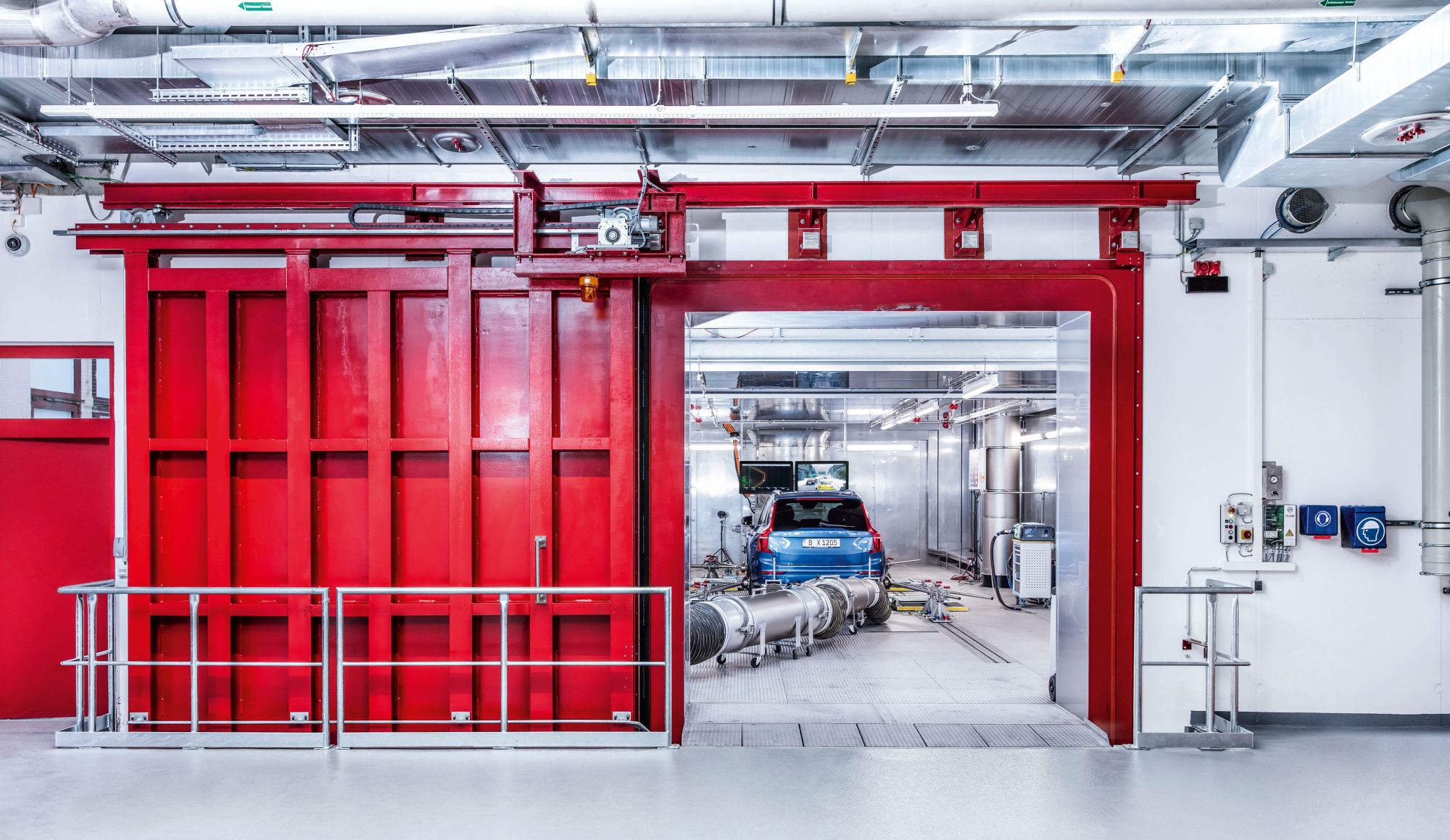
Sophisticated equipment for precise measurements
In the altitude climate roller, the most extreme weather conditions can be reliably and reproducibly simulated for vehicle tests. The facility, which went into operation in 2017, can be used to set temperatures from minus 30 to plus 40 degrees Celsius up to a minimum ambient pressure of 500 millibars. This allows the most extreme conditions in the high mountains up to 5,300 meters to be simulated realistically.
In contrast to conventional chassis dynamometers, the altitude simulation allows not only predefined speed-time profiles to be simulated, but also cornering on real mountain passes or trailer operation.
The customer has the option of carrying out the vehicle test themselves via route guidance on a monitor, but can also control the drive from an external cockpit in an operator room. If required, a driving robot can take over, which can precisely reproduce repetitive cycles in particular, thus increasing the efficiency of the application.
A special feature of the HKR is the synchronized real-time coupling of roller control, driving robot and simulation environment, which allows the vehicle to be integrated seamlessly into the simulation. Up to 230 kW of power per axle can be driven in the test chamber. The humidity as a control parameter can be set up to an altitude of 1,800 meters. The altitude climate roller is large enough to test vehicles from mini (e.g. Smart) to maxi (e.g. vans).
Key data
"We simulate journeys in the high mountains up to 5,300 meters efficiently and cost-effectively."
Thorsten Stappenbeck
